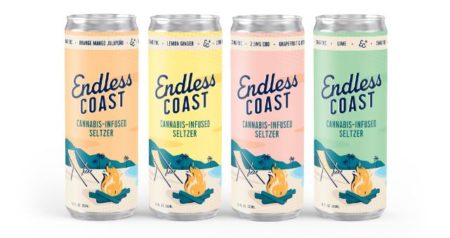Business
Can WeHo become the next Amsterdam?
West Hollywood’s new Emerald Village marketing initiative is the most aggressive cannabis tourism push ever endorsed by an American city, maybe any city. WeHo is licensing 16 consumption businesses which it thinks will make Santa Monica Blvd. into a kind of Amsterdam on the Pacific, a destination for locals, weekenders and tourists.
Whatever happens, it’ll help answer some questions about the future of public consumption. Like, “What’s the business model?”, for starters.
“Having a social cannabis experience, including with strangers, is truly unique and new,” Scott Schmidt, Emerald Village’s executive director said. That’s true. And of course, an international style and LGBT destination is going to have some fabulous joints everyone will want to try.
But will everyone want to come back? Will the lounges and wellness centers be fabulous enough to compete with SoCal’s many other 420-friendly delights, and our screens at home? Plus, as with all things weed, the rules and regulations steepen the road to profit.
Long time coming
The LGBT and cannabis movements have deep historical ties. West Hollywood was an early leader in MED access and later became one of the first SoCal cities to embrace the weed business opportunity. It was home to the restaurant sometimes known as Lowell‘s, probably the first destination cannabis restaurant in the region, which opened in fall 2019 and shuttered during the pandemic. Like any new restaurant, it had a few things to work out, and I’m told there were odor issues, but it was a pioneering effort.
Emerald Village is still in its early stages, with only one open consumption business, but promotion efforts will rev up with promotions at Pride events next month. Voting is has opened for (Drag) Queen of the Emerald Village.
How to make money?
Retail chain The Artist Tree (TAT) opened WeHo’s first post-pandemic consumption business in April taking over the second and third floors above their dispensary on Santa Monica Blvd. The second floor is a restaurant-like area with local art on the walls. It can also work as a comedy club or cabaret. The third floor has more open space with room for yoga and puff and paint classes.
No one knows how a classy WeHo pot cafe would do under ideal conditions. Questions like what and how much people will buy remain largely unanswered. And of course conditions aren’t ideal. Unable to open a kitchen, TAT guests can order food from a neighboring restaurant. There’s no alcohol allowed on premises, and weed sales have to stop at 10 p.m. The lounge offers restaurant style cannabis service, but since it’s connected to TAT’s shop, they’re not charging a markup.
Public consumption spaces are “really needed and lacking,” TAT co-founder Lauren Fontein said, but acknowledged they’re still figuring out how it’ll work as a business. They charge for special events and shows as well as renting guests luxurious bongs and rigs.
The idea is to make it a “welcoming community destination” that isn’t as “one note” as an Amsterdam coffeeshop, Fontein said.
Amsterdam coffeeshops have all the charm of University of Vermont dorm rooms. As a cannabis sanctuary city, Amsterdam became the default hub of a global community. Refugees and fugitives, they weren’t there by choice — no one has anything nice to say about the Dutch — but they gave coffeeshops a reason to exist. They were also novel enough to attract tourists from all over the world. But open cannabis use isn’t as uncommon as it used to be.
Starbucks has been so successful, they say, because it became a ‘third place’ after work and home. Bars can be that as well. Can cannabis anchor a “third place”? That seems like the big question surrounding the future of pot cafes outside places with WeHo’s tourist churn.


